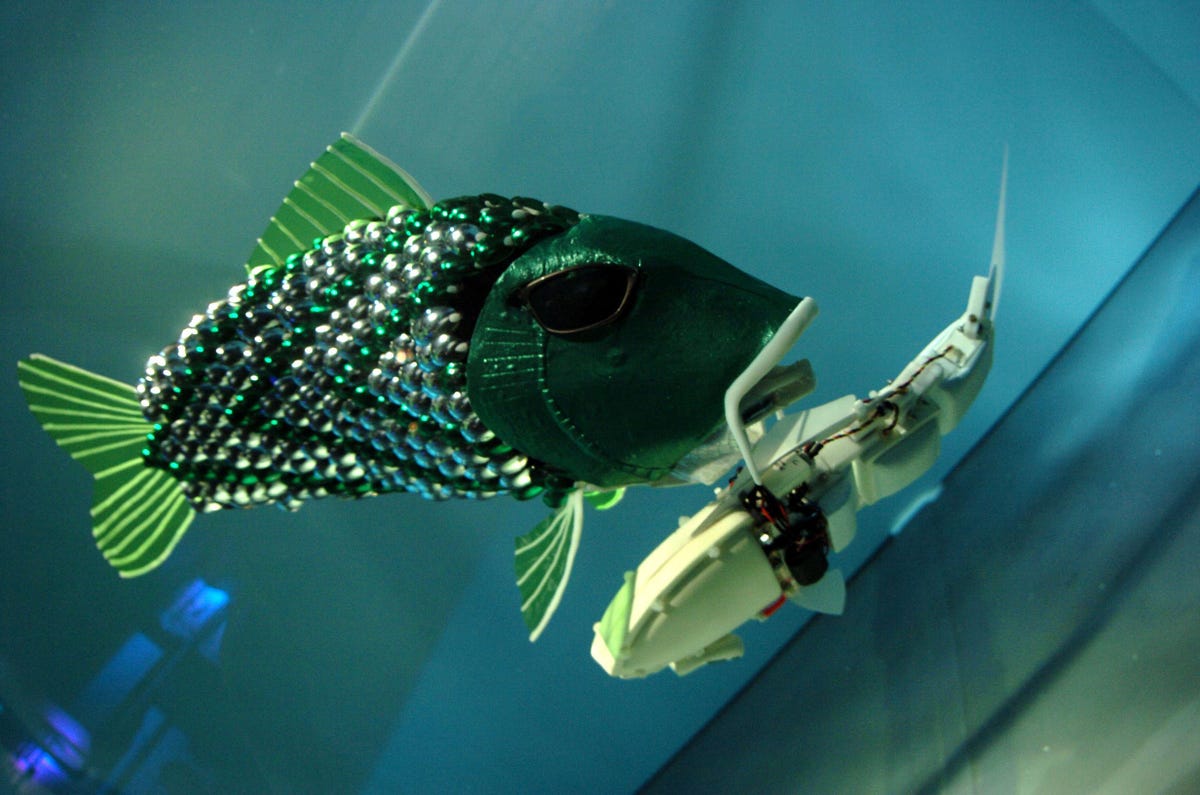Images: Learning from a school of robofish
Carp-shaped robots equipped with chemical sensors will swim a Spanish port detecting pollutants as part of a European Commission research project.

Robotic fish
Some of the prettiest robots will be let loose in a Spanish port to track some of the ugliest of toxins.
As part of a three-year research project funded by the European Commission, five carp-shaped robotic fish equipped with tiny chemical sensors will be let loose in the port of Gijon in northern Spain to find sources of pollutants in the water, such as leaky vessels or underwater pipelines.
The fish, developed by British scientists at the University of Essex, use Wi-Fi technology to transmit information to the port's control center via a charging hub, where the fish charge their batteries. The information will help create a real-time 3D map of the port, showing what concentrations of pollutants are present and where.
According to BMT Group, an independent engineering and risk management consultancy helping to coordinate the project, the fish are 1.6 yards long, roughly the size of a seal, and swim at a maximum speed of 1.1 yards per second. Each costs about $29,500 to make. Shown here is a robotic fish earlier created by the University of Essex researchers and on display at the London Aquarium.
Robofish to monitor pollution
This diagram helps explain the research project, which is considered a "world first" according to BMT Group scientist Rory Doyle. "While using shoals of robotic fish for pollution detection might appear like something straight out of science fiction, there are very practical reasons for choosing this form," he said, alluding to the energy-efficient nature of a fish's movement.
The fish are being built by the Professor Huosheng Hu and his robotics team at the University of Essex's School of Computer Science and Electronic Engineering.
He hopes to have them ready for release into the port by the end of next year.
Fish at London Aquarium
Click here to view a video of the fish in action.

